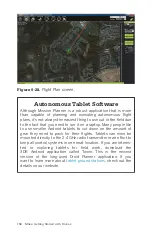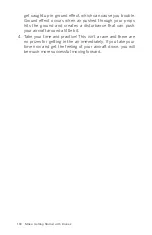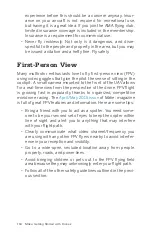
Preflight Checklist and Flight Log
Information
Just as in full-size aircraft, preflight checklists and flight logs are
essential to maintaining a safe aircraft and flying environment:
• Date and time.
• Location and safe takeoff/landing area established.
• Operator and any flight team members such as spotters or
camera operators.
• All wiring and hardware connections are secure.
• Aircraft, radio and channel, flight modes/settings
• Propellers and batteries used. We like to label and track
each battery’s usage.
• GPS: Number of satellites locked in.
• Weather, sun direction, wind direction and speed. Maximum
safe wind speeds depend on the weight and design of your
aircraft. The Little Dipper is very light at 2 lbs, so it is best to
fly it below 10 miles per hour. Heavier multirotors can han-
dle stronger wind. Also, avoid precipitation. Water and elec-
tronics do not mix well.
• Purpose/subject, mission, and contact person.
• Potential dangers and plan for handling each.
• Elevation/speed reached.
• Payload secure—best to start off payload-free.
• Camera settings and memory card with available space.
• Flight length and observations—did anything irregular
occur regarding the equipment or experience?
Never fly over crowds or traffic.
166 Make: Getting Started with Drones
Summary of Contents for Terry Kilby
Page 1: ......
Page 3: ...Make Getting Started with Drones Terry Kilby and Belinda Kilby...
Page 26: ......
Page 90: ......
Page 126: ......
Page 153: ...Figure 9 10 Compass setup Figure 9 11 Compass calibration ArduPilot Mega APM Setup 141...
Page 198: ......
















































